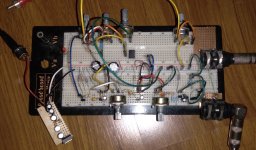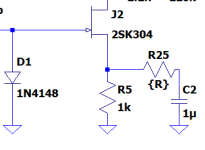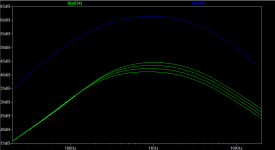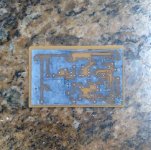Following a previous thread (orange solid state preamps), I've decided to breadboard the dirty channel of the rockerverb with jfets in place of the tubes.

Plugged everything and had nothing but noise, just to notice I had left the gate of the first jfet disconnected.
With everything properly connected, it works just fine, except that I had to use B1M for the drive pots (had to split the dual A1M), which makes it a bit hard to control.
Sounds pretty good, with loads of gain, but of course I won't claim it sounds like the preamp of the rockerverb.
I have yet to test it being hit with dirt pedals. Jfets used were some sk304 with measured vp around -0.9V and IDss around 0.9mA
I will test it a little more, but it seems destined to be properly built and boxed
Edit: I'm powering it with a 22v supply (the litlle veroboard)

Plugged everything and had nothing but noise, just to notice I had left the gate of the first jfet disconnected.
With everything properly connected, it works just fine, except that I had to use B1M for the drive pots (had to split the dual A1M), which makes it a bit hard to control.
Sounds pretty good, with loads of gain, but of course I won't claim it sounds like the preamp of the rockerverb.
I have yet to test it being hit with dirt pedals. Jfets used were some sk304 with measured vp around -0.9V and IDss around 0.9mA
I will test it a little more, but it seems destined to be properly built and boxed
Edit: I'm powering it with a 22v supply (the litlle veroboard)






